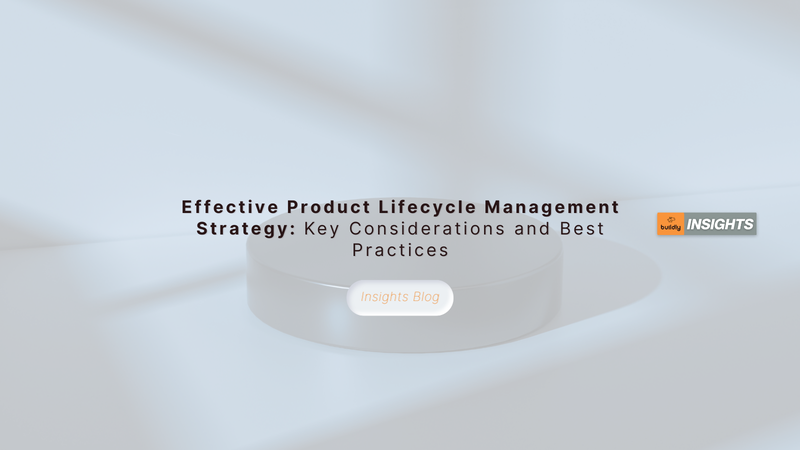Effective Product Lifecycle Management Strategy: Key Considerations and Best Practices

- admin
- June 26, 2023
Successful businesses recognize the value of having a strong product lifecycle management (PLM) strategy in today's competitive business environment. A properly implemented PLM approach can speed up the time to market, improve product development, and increase profitability. In this post, we'll look at the key procedures and recommended methods for developing a successful PLM strategy.
- Establish Clearly Defined Goals and Objectives: Start by outlining the PLM strategy's implementation goals and objectives for your company. Decide on the main target areas, such as accelerating time to market, cutting costs, strengthening team cooperation, or improving product quality. These objectives will act as the PLM implementation process's guiding principles.
- Conduct a Detailed Evaluation: Evaluate your present product lifecycle management procedures in full detail. Determine the problems, obstacles, and potential improvements. Consider the efficiency of the currently in-use tools, systems, and technology. This assessment will create the framework for creating an efficient PLM strategy and offer insightful information about the particular problems your firm confronts.
- Organize smooth cross-functional collaboration between teams and departments, such as product design, engineering, production, marketing, and sales, in order to implement successful PLM initiatives. To make sure that everyone is on the same page and working toward the same objective, promote open communication and create cross-functional teams. This cooperative strategy will encourage innovation, enable the sharing of knowledge, and increase overall productivity.
- Implement the Correct PLM Software: An effective plan requires the use of the correct PLM software. Try to find a system that covers the complete product lifecycle, from concept to retirement, and is in line with the specific requirements of your company. Take into account elements like flexibility, scalability, integration potential, user-friendliness, and vendor support. Data will be centrally located, procedures will be automated, and effective collaboration will be possible thanks to PLM software.
- Streamline Existing Workflows and Processes: Examine and streamline current workflows and processes to remove duplication, reduce errors, and increase effectiveness. Find places where automation can be used to speed up time-consuming procedures and reduce manual labor. Having streamlined workflows ensures that data is shared throughout teams without any interruptions, boosting efficiency.
- Accept Change Management: Putting a PLM strategy in place frequently necessitates changing the organizational culture. It is imperative to address any change-related reluctance and give staff members the necessary assistance and training. Encourage continuous improvement and provide employees with the freedom to use new tools and procedures. The advantages of the PLM approach are maximized with effective change management, which guarantees a seamless transition.
- Establish metrics and key performance indicators (KPIs) to gauge the success of the PLM strategy after it has been put in place. Then, monitor, measure, and adapt the strategy as needed. Keep an eye on the data and regularly evaluate it to spot problem areas and make the required corrections. The PLM strategy will continue to be in line with changing business needs and market realities if it is actively monitored and modified.
Careful planning, cross-functional cooperation, and a dedication to continuous improvement are necessary to create a successful product lifecycle management approach. Organizations may streamline their processes, define clear goals, use the correct technology, embrace change, and maximize their product development. Companies will be well-positioned for long-term success in a market that is rapidly changing if their PLM strategy is well-implemented.

